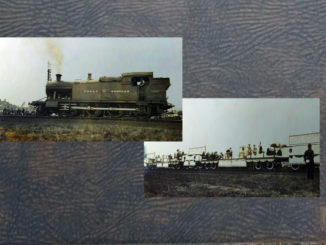Setting off from Edinburgh on a splendid May day, Mrs. AWS and I enjoy our Burger Kings. In the mad world of railway pricing, one of only two differences between Avanti Trains Standard Premium and First Class is the food. A mid-afternoon First-Class snack on the 125 mph Pendolino would set us back £90 with, judging by our breakfast out, nothing being first class about it except the price. We opt for Standard Premium, savouring our burgers while feeling superior about our cost-effective choice.
If you’re one of those travellers who need Instagram-perfect-life photos of every trip (I am), here’s a tip. The other difference is your seat’s antimacassar emblazoned with ‘Standard Premium’. This detaches to reveal ‘First Class’ embossed on an Avanti Trains headrest. Lose the antimacassar and snap away.
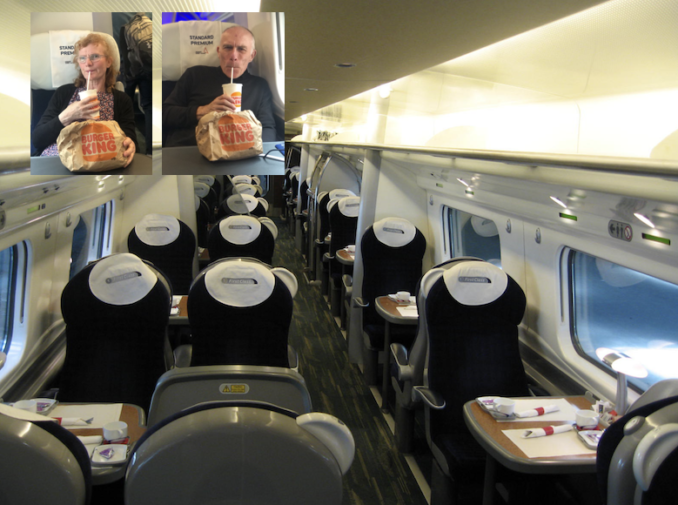
Virgin Pendolino First Class (UK),
Luxury Train Club – Licence CC BY-SA 2.0
Despite the magnificent scenery and weather along the former Caledonian Railway mainline, the trip from Edinburgh to Carlisle is sombre. After following the infant Clyde upstream and conquering the Southern Uplands south of Carstairs, we thunder through the Scottish Lowlands. En route, there is pause for thought. During a previous visit to Edinburgh Castle’s Scottish National War Memorial, some old newspaper cuttings telling of tragedy caught my eye.
In Network Rail speak, the geography of this part of the West Coast Mainline is challenging and dominated by the steep gradient at Beattock Summit. Along a two-track section of the high-speed line, passing loops at Quintinsill, Lockerbie, Beattock Summit and Abington allow freight trains to be regulated to ensure a robust timetable for passenger services. Over a century ago, the negligent working of such caused the worst rail disaster in British history.
At Quintinshill Loops, near Gretna Green on the Scottish side of the border, on May 22 1915, a catastrophic collision involving five trains resulted in the deaths of over 200 people and injury to over 200 more.
Sometimes referred to as the Gretna rail disaster, the tragedy began when a local passenger train remained standing unprotected on the main line due to signalman errors. Soon after, a troop train carrying soldiers of the Royal Scots en route to Gallipoli crashed into the stationary train. Moments later, an express train travelling in the opposite direction collided with the wreckage, causing a massive fire fueled by gas lighting used in the carriages.
A sequence of failures, including neglected procedures and miscommunication between signalmen, led to the tragedy. The subsequent inquiry revealed signalmen George Meakin and James Tinsley failed to set the signals correctly and improperly logged train positions. Both were convicted of culpable homicide and imprisoned. On account of the various coroners’ inquests and the trial of the railwaymen, Railway Inspector Lt-Col Druitt’s investigation, dated 17th June, was published in late September.
The three trains concerned were the 6:10 a.m. ex-Carlisle which consisted of three Caledonian Railway carriages and a six-wheeled milk van hauled by 4-6-0 engine No. 907. Secondly, a troop train from Larbert made up of four Great Central Railway bogie coaches and eleven GC six-wheelers for passengers, and five Caledonian Railway six-wheelers (two caravan trucks, two fish vans, and brake van), and one Caledonian Railway open scenery bogie truck, making twenty-one vehicles in all. 4-4-0 engine No. 121 hauled. Train number three was an 06:05 a.m. West Coast express of three twelve-wheelers and ten bogies topped by 4-4-0 engines Nos. 140 and 48.
Two collisions occurred about one minute apart, first of the troop train and the local. Then, the West Coast express struck the resulting debris. In addition, wreckage struck two goods trains in sidings. Each collision was of a severe nature, and the driver, F. Scott, the fireman, J. Hannah, and a large number of the officers and men of the 1/7th Royal Scots travelling on the troop train, perished. The men, the majority from Leith, were on their way to board ship at Liverpool in order to travel to the battlefront at Gallipoli.
Druitt calculated 227 dead and 246 injured. Of the dead, 82 bodies couldn’t be recognised because of the intensity of the resulting blaze, identification being further hampered by the absence of a Batallion Roll lost in the accident. Five officers in the 06:05 express also lost their lives.
Relevant equipment carried in the troop train consisted of: Two extinguishers, two refills for same, two axes, two saws, two long pinch-bars, two small pinch-bars, two water buckets (i.e., one of each of the articles mentioned in each of the two brake compartments). The brake van of the local train was also equipped with: One fire extinguisher, one handsaw, one tore-hammer, one chisel, one hand-lamp, one hand hammer, one pinch bar, one fire bucket, one collapsible ladder. Lt Col Druitt concluded the trains were ‘well supplied and the equipment justified itself on this occasion.’
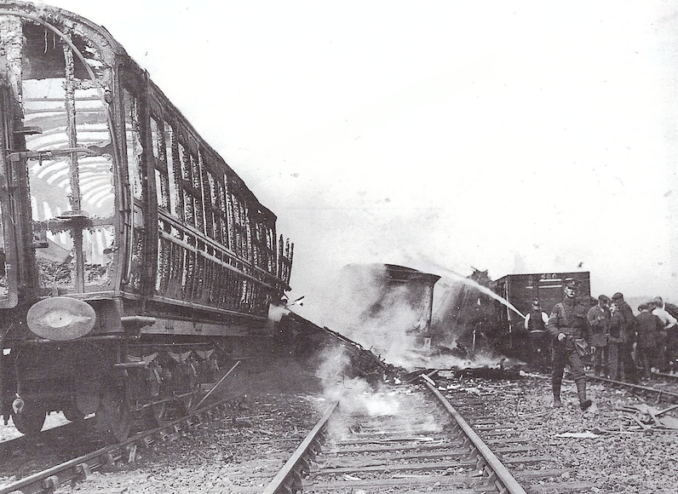
Accident ferroviaire de Quintinshill, le 22 mai 1915,
Unknown photographer – Licence CC BY-SA 3.0
He summed up as follows:
“The responsibility for the collision lies entirely with the two signalmen, G. Meakin and J. Tinsley, as all signals were lowered for the troop train at the time of the first collision, and for the express. Meakin crossed the 6.10 a.m. local train from the down to the up line. It was unquestionably his duty to have protected it. Both by sending the ‘Blocking Back’ signal to Kirkpatrick and also by placing a clip on the up home signal lever before handing over his duties to Tinsley.”
Negligent use of bell-coded signals to a neighbouring signal box at Kirkpatrick, the absence of a reminder collar on a signal lever protecting an occupied section of track and the wrongful release of a ‘track-occupied’ indicator lock resulted in the following:
With the down loop (‘down’ to Glasgow, ‘up’ to Carlisle) already containing a goods train, a down local passenger train from Carlisle had been reversed onto the up main line (‘blocked back’) in order to allow a down express to pass.
In the up direction, a coal train sat in the loop. With no reminder on the signal lever and no message to Kirkpatrick, the troop train was signalled through Quintinshill and collided with the 06:10 local from Carlisle on the up main line. Moments later, the down express (which the local had been placed on the up line for) collided with wreckage scattered across the down line.
Informal arrangements for signalmen clocking on and clocking off meant entries in the signal box’s register were put on a piece of paper and copied into the register by the next signalman. This caused distraction to the relieving signalman, Tinsley, after the handover of the box from Meakin. Guards from the looped trains also lingered in the signal box after administering Rule 55.
This regulation states if a train is brought to a stand at a signal, the fireman or guard must make for the signal box. They must ensure the signalman is aware of the presence of the train and all safeguards to protect it – such as collars on the signal levers – are in place. The crewman must sign the train register to confirm this. On the fateful morning, the guards of the looped freight and passenger trains didn’t check the safeguards and lingered inside the signal box causing further distraction to Tinsley.
Additionally, according to Lt Col Druitt,
“Signalman Meakin should have completed his duties and left the signal box, whereas he remained reading a newspaper; and although he says he did not read from it aloud, he admits he may have made the other men in the box aware of interesting pieces of news, and there was some general conversation going on.”
Of the accident in its entirety, the Inspector concluded,
“This disastrous collision was thus due to want of discipline on the part of the signalmen. First by changing duty at an unauthorised hour, which caused Tinsley to be occupied in writing up the train register book, and so diverted his attention from his proper work. Secondly, by Meakin handing over the duty in a lax manner; and, thirdly, by both signalmen neglecting to carry out various rules specially framed for preventing accidents due to forgetfulness on the part of signalmen.”
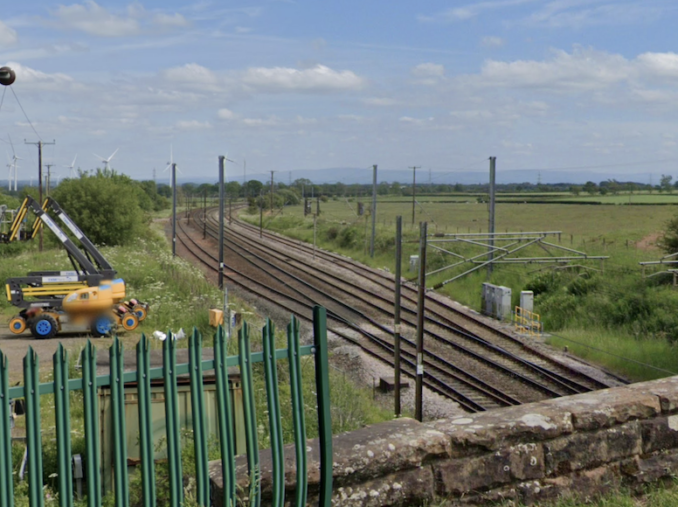
© Google Street View 2024, Google.com
The Inspector also remarked on some general facts of the accident and the conditions and occurrences which caused it. He pointed out, ‘Men engaged in routine work, where the conditions may easily become dangerous either to themselves or others, sometimes get into a loose way of working and habitually neglect regulations which have been laid down for their own or others’ protection.’
“I have noticed in other cases the use of the lever collar has been neglected. Both Meakin and Tinsley admitted they did not think it necessary to use one to protect a train crossed over from one line to another and it was seldom used. With regard to the irregular hour of changing duty, it is hard to understand how it had not come to the knowledge of the stationmaster at Gretna during the fifteen months he had been stationed there, as Tinsley lived in the station cottages there.”
The report also regretted some signalmen did not look out of signal boxes to check the line over which an approaching train is to run. It takes only a brief interval to do so, and many collisions would be prevented by this simple precaution. If Tinsley looked along the line on this occasion, only 60 yards distant, he could not have helped but see the 06:10 local train standing.
To some extent, the influence of the war should be allowed for. Traffic on the Caledonian Railway into and out of Carlisle rose 40 per cent in each direction from the previous July when Austo-Hungary declared war on Serbia and began the Great War. As for the damage to the trains and high number of fatalities. The damage to the troop train was excessive due to its high speed, to some of the six-wheeled coaches being old and to eleven of the fifteen vehicles having oak underframes.
As for the ensuing fire, the Inspector considered the cause of the outbreak to be due to live coals from the overturned engine of the troop train being intensified by an escape of gas from the cylinders. The ashpan of the troop train’s engine ended up on its side. Forced in and with firebars displaced, a clear opening at both ends allowed burning coal from the fire to make contact with the wreckage lying all about. Coal from the overturned tender was scattered amongst the debris.
The violence of the collision buckled the underframes and bodies of the troop train carriages. A large number of the gas cylinders in the vehicles tore open or were ruptured by the excessive pressure of gas caused by intense heat. The gas was used for lighting, with iron gas cylinders being slung under the carriages.
The remains of the soldiers who perished were returned to Leith and interned in a mass grave at Edinburgh’s Rosebank cemetery.
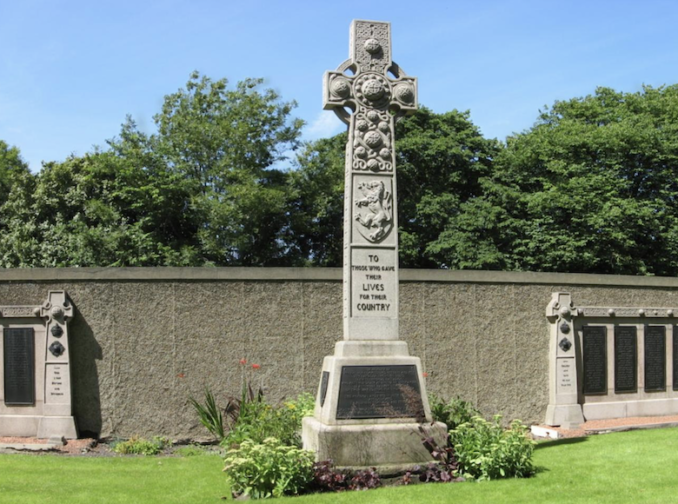
Monument to the victims of the Gretna Rail Disaster,
Jonathan Oldenbuck – Licence CC BY-SA 3.0
The Quintinshill disaster prompted significant changes in railway safety regulations and signalling practices. It remains a sombre reminder of the potential consequences of human error in railway operations and the importance of stringent safety measures. The ensuing alterations to working practices will no doubt have made travel safer and saved many lives. However, seven decades later and unbelievably nearby, an even greater loss of life fell from the skies.
To be continued…
© Always Worth Saying 2024



